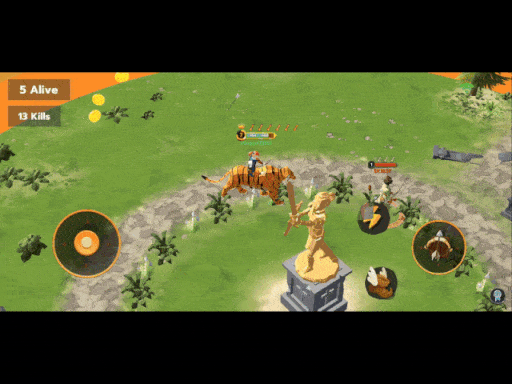



Game Designer | Producer
What I Did
- Improved in-game economy by optimizing item pricing and implementing a secondary soft-currency sink between levels which lifted overall LTV
- Utilized PlaytestCloud to gather player feedback before tuning gameplay and refining the overall UI/UX experience
- Designed numerous innovative mechanics to support ongoing Live Ops events, which raised event participation by 50%
- Managed tasks and data with ClickUp and Excel
Brief
Helix Stack Jump is a Hyper-Casual 3D Arcade Game for Android and iOS. The objective is to break through all the stacks and reach the bottom of the level while avoiding the black segments. Players can earn gems or play Live Ops events to unlock new skins.
Role
I was the designer and producer of the project. I focused on improving levels, Live Ops participation, and creating interesting soft-currency sinks. Meanwhile, I handled tickets, communicated with developers, and solved problems based on data and player feedback.
Level Design
The data team showed that some players quit the game after completing certain levels. Since more players would experience the early levels, we decided to focus on fixing them first.
I analyzed the early levels with the data and tried to find the differences between high and low conversion levels. I realized that the players preferred smoothness and good pacing. For example, not having too many stops and waits, and activating the fever mode naturally if the players followed the preferred paths. I then worked with the level design team to remake the levels and did A/B tests. We were able to apply the better versions and brought up level conversion.
Live Ops
The team decided to improve Live-Ops participation to increase time in-game and advertisement occurrences. With the help from the data team, I analyzed the potential issues of the current live-ops structure and churn points. It showed that the players had bad experiences in the live ops game mode and quit the game.
Based on the findings, the team decided to test new gameplay mechanics in the live-ops game mode. My approach was to design new and interesting mechanics while keeping the same controls to lower the cost of learning the game mode. On top of that, update the in-level UI elements to help teach the new mechanics. We were able to bring up the Live-Ops participation in the end.
Economy
There was only 1 currency in the game - gems. The player could only purchase new skins with gems. However, from the data, I saw that the players would keep the gems and don't spend them even if they were very late in the game.
We were curious to know whether the players didn't like the skins, didn't think they were important or didn't know how to purchase them. So, I looked into the data and worked with the data and engineer teams to set up more loggings. Then, I looked into the funnels and realized the above theories could be valid.
After that, I exposed the skin store more between levels and options for the players to get their first free skin so they could learn what skin was. On top of that, I used data to calculate players' progression on gems and updated the skin prices to ensure the pacing fitted the progression.








